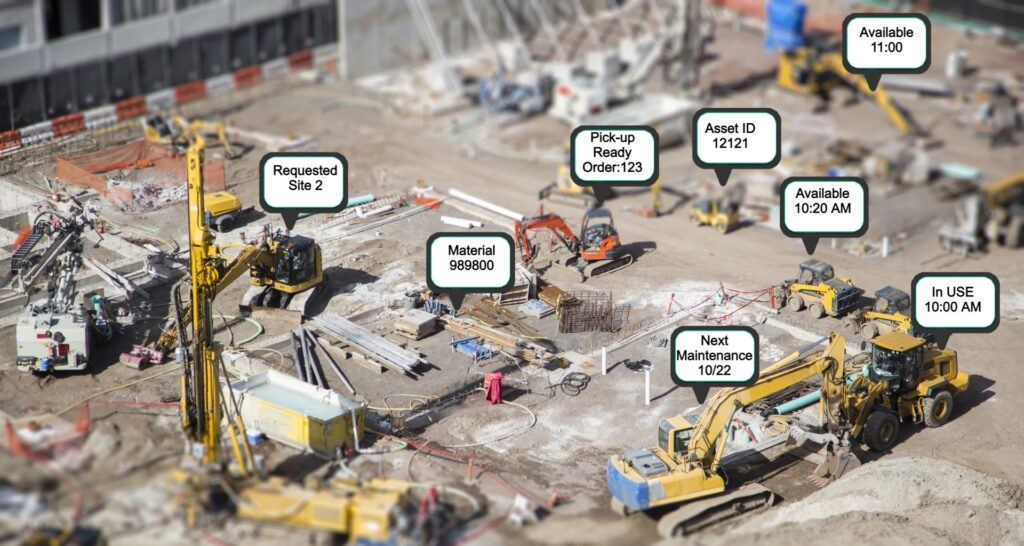Cosmetic Care: Smart Monitoring Solutions for L’Oréal’s Warehouse Excellence
L’Oréal’s Warehouse Temperature Monitoring Success. L’Oréal Brazil, a leading cosmetic company renowned for its innovation and commitment to delivering
Track asset performance, execute maintenance and service, and maximize uptime with advanced technologies.
Deliver as promised with risk-resilient, reliable, and sustainable logistics operations.
A revolutionary convergence of personal and process safety that improve efficiency, safety and reliability.
Asset management software removes the hassle of paperwork and can improve the accuracy and timeliness of your fixed asset records. Creating a new asset in your ERP system is as easy as putting on a barcode label, scanning it with a handheld device, and entering some information.
One of the top challenges facing supply chain professionals today is keeping track of their fixed assets. For managers, this means having the right tools, equipment, and parts on hand to keep plant maintenance running smoothly. Manufacturers need to keep the right amount of fixed assets in stock to ensure the production line doesn’t grind to a halt. Meanwhile, warehouse employees have to re-prioritize significant amounts of time to hunting down assets, only to discover they don’t exist.

One of the most attractive aspects of fixed asset tracking is its flexibility. Fixed asset tracking can take many forms, depending on your company’s needs and structure. Here are a few to consider.
The use of barcodes has been a mainstay of the retail industry for several decades. However, barcodes are also useful in fixed asset tracking.
In this method, a small set of black and white lines are scanned by a proprietary handheld scanner. The use of barcodes is more economical than other forms of tracking and is best when there is no need for large amounts of data storage.
They are usually pre-printed on labels and some are also scannable by smartphone apps. While barcode labels are appropriate for many forms of fixed asset tracking, they very rarely allow for unique identifiers.
RFID stands for Radio Frequency Identification. Like barcode systems, special equipment is necessary in order to use this kind of organization. RFID tracking makes use of radio waves to transmit data that is encoded digitally.
The tags are attached to the tracked object, and a reading device then picks up the signal and reads the information. While RFID tags might prove more expensive and bulky than barcodes, they provide more security than other methods.
In general, RFID tags are best applied in health care, hospitality, manufacturing, mining, and within organizations with several valuable fixed assets such as museums, machines, tools, electronics processes.
GPS (global positioning technology) is best known by consumers in maps and directional aids. Where fixed assets are concerned, however, they can be useful deterrents against theft. They might also be used to help guide contractors, third parties, vendors, and clients to the location of certain assets.
BLE (Bluetooth Low Energy) tracking is another form of technology that is increasingly starting to become integrated into everyday life. Most consumers use Bluetooth to “go wireless” with such electronic products as projectors, headphones, and printers.
However, when applied to fixed asset tracking, BLE is useful in broadcasting beacons that allow devices to communicate with one another. They are most useful when substantial battery capacity is more important than transferring large amounts of data.
NFC is short for near-field communications. It is closely related to RFID technology, but the distance it covers is usually much shorter—typically a matter of inches.
NFC tracking is best for organizations seeking to avoid the purchase of specialized equipment; it takes place on a smartphone.
Most are familiar with NFC tracking through the use of point-of-service payment apps. While NFC offers rapid service, excellent security, and efficient use, it can be more expensive than other forms of fixed asset tracking.
Explore our news to learn more about SmartX solutions
L’Oréal’s Warehouse Temperature Monitoring Success. L’Oréal Brazil, a leading cosmetic company renowned for its innovation and commitment to delivering
5 Tips for Maximizing Oil & Gas Asset Utilization With RFID Effective asset utilization holds immense significance in the
Manufacturing Automation Optimized With RFID RFID tags facilitate the seamless transmission of data alongside a product, enriching the information
Try SmartX HUB free for 15 days. No strings attached.
Organizations large and small and across industries can leverage RTLS to improve safety, safeguard materials and work more efficiently.
Discover how your peers are benefiting from real-time visibility.